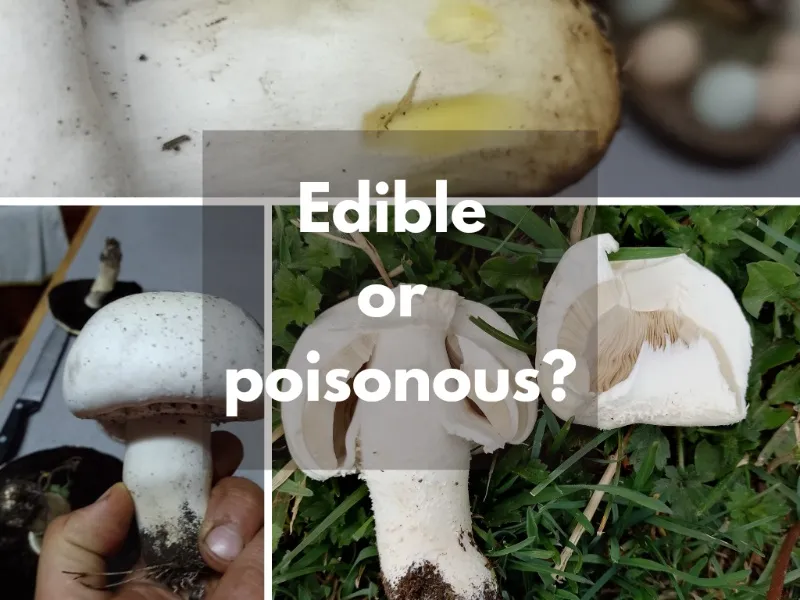
Wanting to live a plant based lifestyle in rural areas can be quite the challenge, especially in a place that is mainly oriented to cattle. Mushroom lore and identification then become essential to finding ways to sustain the body with good nutrition. Being still very new at this, I can say it's a very exciting endeavor to research possible new foods that grow around these areas, which usually ends in a feeling of satisfaction as you add a new item to your off-grid survival list.
A few days ago, @choli and I found some mushrooms that looked very much like the edible agaricus campestris that is found during fall here in south Chile. Yet, some things were off, such as the size, colors, and texture, so research was necessary.
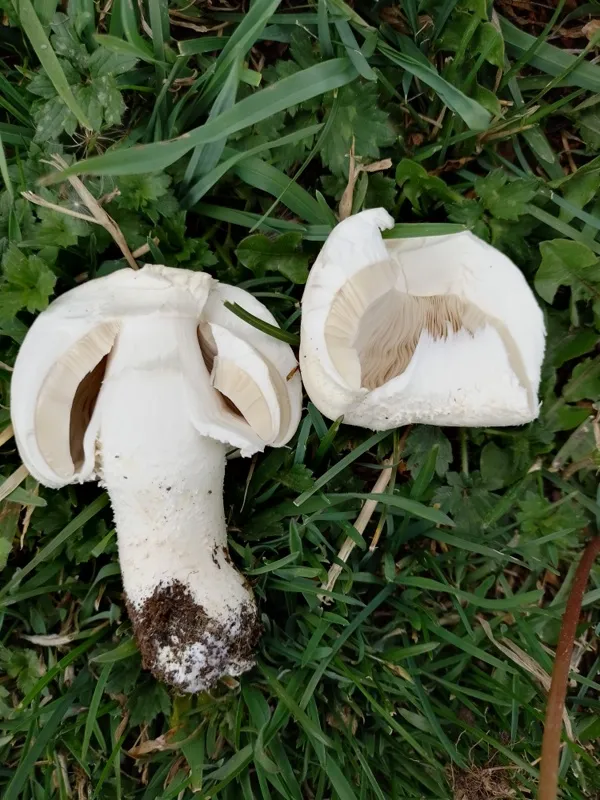
We spent time studying wether these shrooms we found were agaricus arvensis (edible) or agaricus xanthodermus (toxic). We found them in a grazing field and first thought they could be edible but we needed to be sure.
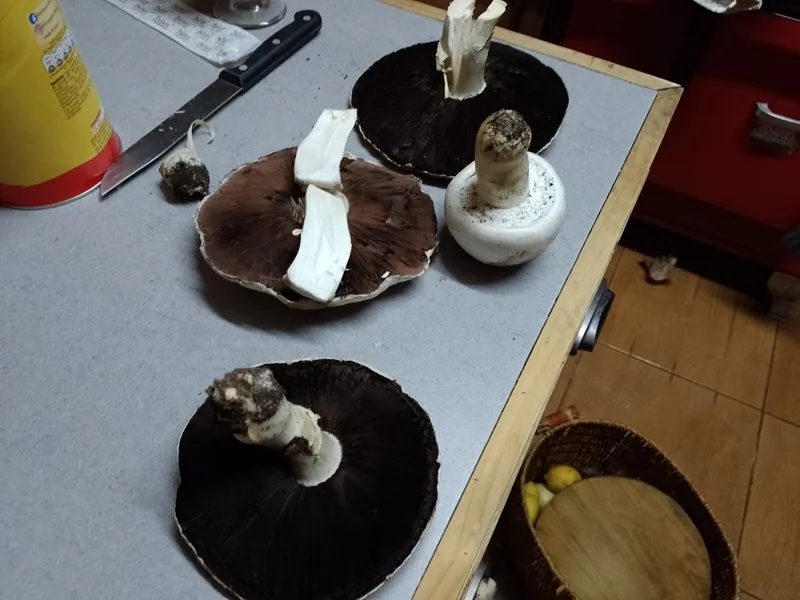
We looked up in a few forums and followed the different leads that help differentiate these mushrooms. The first one was to scratch the base to see how yellow it became after bruised. A. Xanthodermus should become very yellow, while arvensis only a bit. There was some yellowing but not excessive so that was a point for arvensis:

This is a picture of an actual xanthodermus:
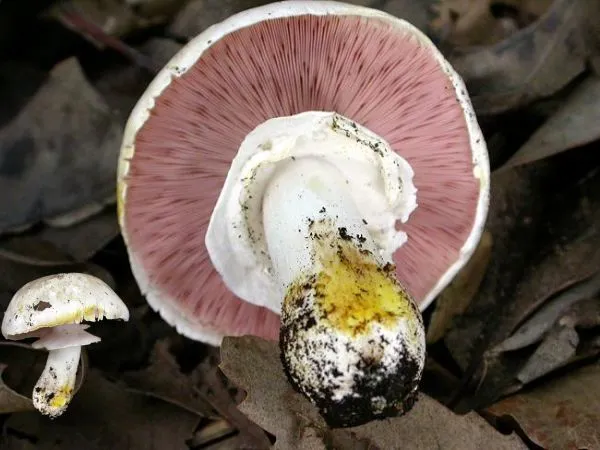
Clearly different I'd say.
Another important factor to identifying these shrooms is that arvensis should have a sweet anise-like smell which is characteristic of this species, while xanthodermus wields an unpleasant fenol smell. This was also a point for our foraged fungi as they had strong smell of anise.
Xanthodermus is said to have a hollow stem so we opened up to check an this was not the case:

Furthermore, arvensis is supposed to have a "dented wheel" under the cap when closed that is very easy to distinguish, while xanthodermus is harder to see. Out the picture it was clearer but you can still see it if you look closely, so this was another point for arvensis:
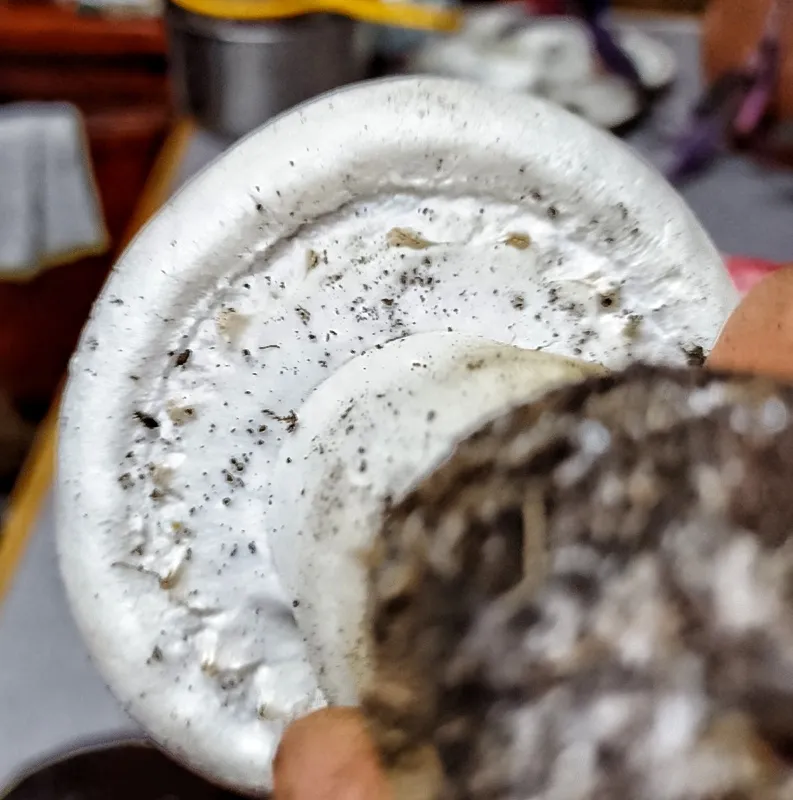
Finally, the last test that was recommended was to taste it. Xanthodermus is said to have a very bad taste and that one single cap can ruin a whole meal made with other mushrooms. None of these tasted anything unpleasant so we concluded it was safe to eat them. In any case, xanthodermus intoxication isn't lethal, just some really bad gastrointestinal disorder for a while.
Once convinced, we sauteed them with garlic and had a delightful dish, though a bit scarce since they were the first we find this season. We're obviously looking forward to go out foraging once they're more available.
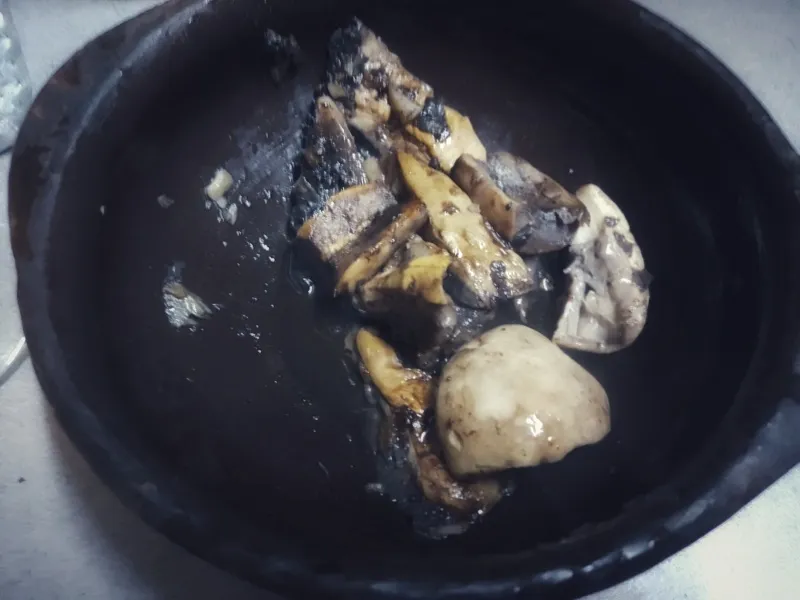
Another info worth sharing from our research: the caps that have opened and blackened are not recommended for eating as digesting them is more difficult. We discarded the caps that were already black and ate the rest.
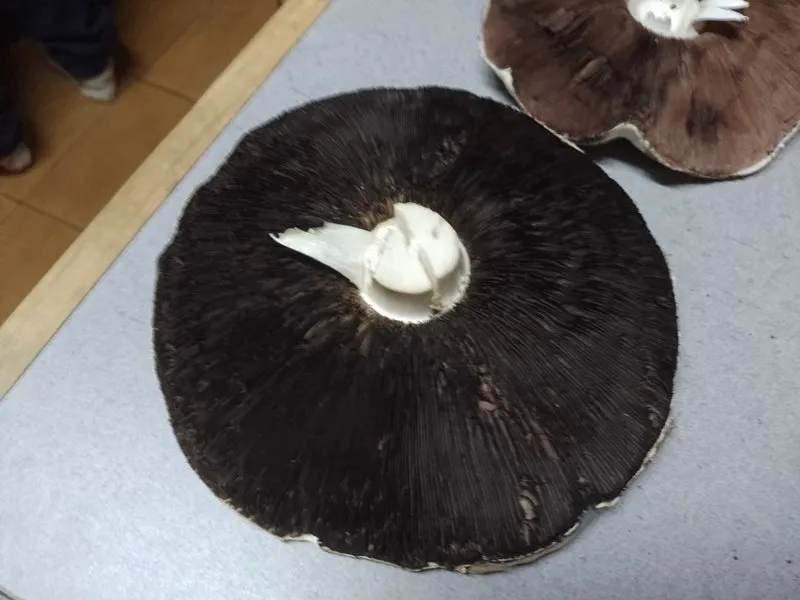
I hope you've gotten something out of this post. Feel free to start some debate on the identification down in the comments. Do you have any other tips on distinguishing agaricus xanthodermus from other agaricus? Would be grateful for your input, have a good day.